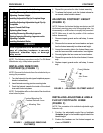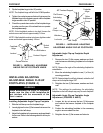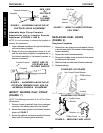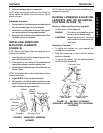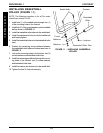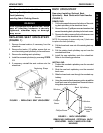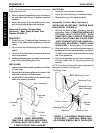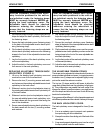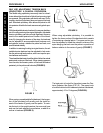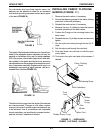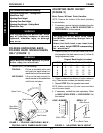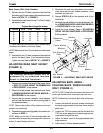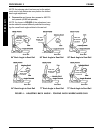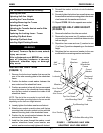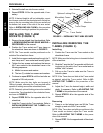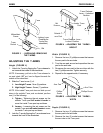
22
UPHOLSTERYPROCEDURE 2
U
P
H
O
L
S
T
E
R
Y
FIGURE 7
The best point of control for the pelvis is near the Pos-
terior Superior, Iliac Spine (P.S.I.S.). The upper trunk
should be relined until a balanced posture is achieved,
approximately 10 to 15 degrees (FIGURE 8).
FIGURE 8
WHY USE ADJUSTABLE TENSION BACK
UPHOLSTERY: A CLINICAL DISCUSSION.
The flexible sling upholstery commonly used on wheel-
chairs allows the wheelchair to fold without removing rigid
components. Sling upholstery will stretch with use. Unfor-
tunately, stretched upholstery does not support the back
well. Stretched upholstery often allows the pelvis to drift
into posterior tilt while the back assumes a kyphotic pos-
ture.
With the adjustable tension backrest, the sag can be taken
out of the sling restoring the original tightness. Adjustable
tension upholstery can also provide significant improve-
ment to the seated posture and function of the wheel-
chair. By changing the tension of the strap, the backrest
can be adjusted to accommodate back postures such
as kyphosis, lordosis, stabilize the pelvis and back, and
provide lateral stability.
In addition to restoring the sling to original tension, the ad-
justable tension backrest can be adjusted to help main-
tain the pelvis and back position, which can improve pos-
ture balance and function.
The wheelchair backrest should be able to follow the natural
anatomical contours of the back. When viewing a person
from the side, the thoracic portion of the back will extend
posteriorly to the pelvis and buttocks (FIGURE 5).
FIGURE 5
When using a nonadjustable flat backrest, the top por-
tion of the upholstery will usually push the trunk for-
ward of the center of gravity over the pelvis. To main-
tain the trunk in the upright posture, the user must have
and use the back extensor musculature, or add tilt or
recline to backrest (FIGURE 6).
FIGURE 6
When using adjustable upholstery, it is possible to
tighten the lower portion of the backrest which assists
in maintaining a neutral pelvis. The upper portion can
then be adjusted to follow the natural curvature of the
spine bringing the back over the pelvis in a position of
balance relative to the center of gravity (FIGURE 7).



